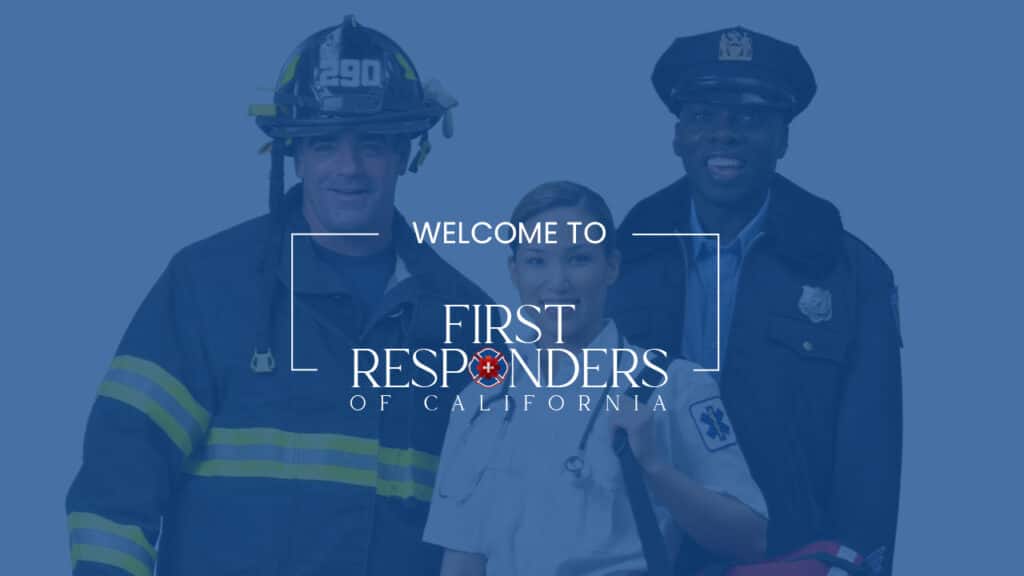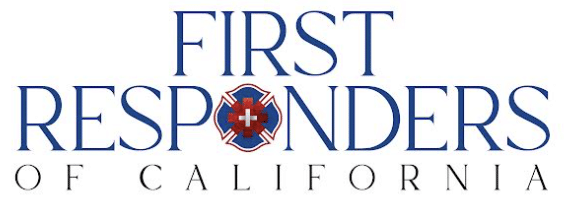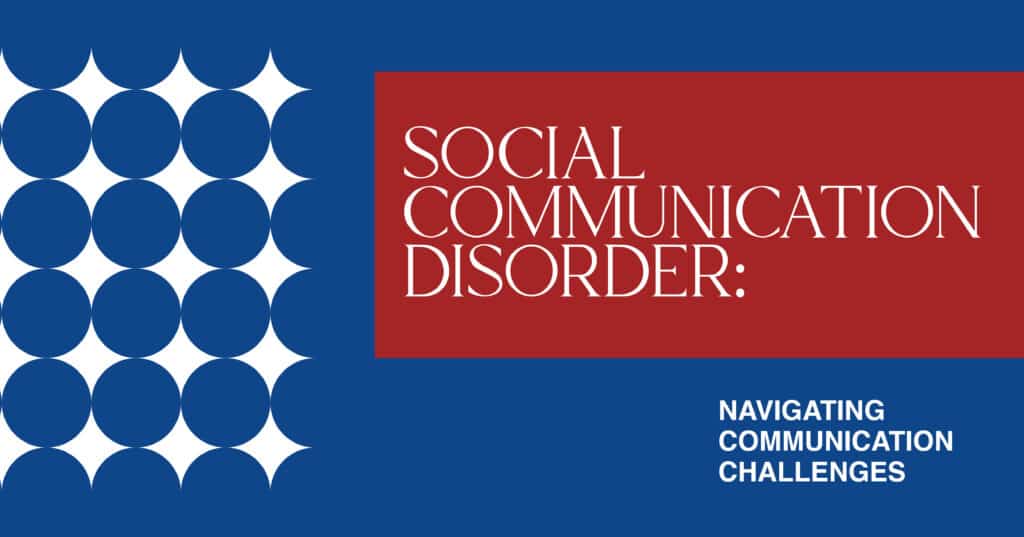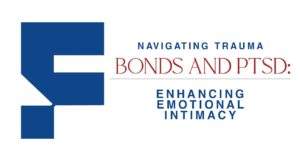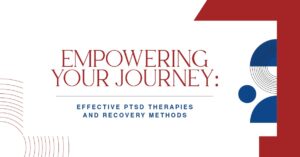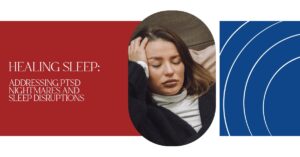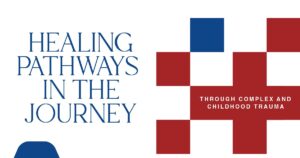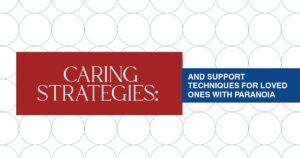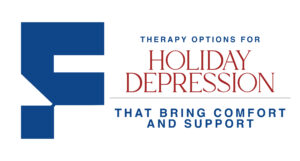Difficulties in social-situational communication skills characterize Social Communication Disorder (SCD). These relate to issues of knowledge and practice in verbal and nonverbal communication. Such problems can harm individual relationships, academic pursuits, school careers, work, or social situations. The First Responders of California’s mission statement is to assist patients with social communication disorders in coping with these challenges by using treatment strategies that enable them to acquire practical communication techniques.
Defining Social Communication Disorder and Its Impact
The main characteristic of Social Communication Disorder is that a person continues to experience difficulty with language use in social situations. This affects the way one relates to others in their day-to-day life. Although this condition has similarities with other communication disorders (speech delay or language difficulties), SCD targets the social component of language expression. Communication may become difficult as people experiencing this distress struggle to adapt their communication to fit the social scenario.
It is possible to say that the implications of SCD might be a colossal expense,
- Emotional Effects. Individuals can also feel isolated or misunderstood because of obstacles that prevent them from engaging with the rest of the world effectively.
- Academic Consequences. Social situations may produce communication difficulties that affect classroom participation and the formation of connections with peers, impacting a child’s academic experiences.
- Workplace Implications. In adulthood, people with SCD may face employment challenges, including working in groups, networking, and pursuing career development.
First Responders of California
Identifying Pragmatic Language Impairment in Individuals
One of the most distinctive elements of the Social Communication Disorder is the pragmatic language impairment. It describes the inability to use language appropriately in a social context.
Individuals who suffer from pragmatic language impairment usually have difficulties with:
- Turn-taking in conversations
- Sticking to the point
- Understanding jokes or sarcasm
- Analysis of gestures, facial expressions
| Pragmatic Language Impairment Area | Description | Challenges Faced | Possible Interventions |
| Turn-taking in Conversations | The ability to take turns during a conversation. | Interrupting, speaking over others, or not responding in time. | Role-playing and practicing conversational turns. |
| Sticking to the Point | Staying on topic and providing relevant information during a conversation. | Going off-topic or failing to remain focused on the main idea. | Focused conversation practice, structured communication. |
| Understanding Jokes or Sarcasm | Comprehending humor, jokes, or sarcasm. | Misunderstanding jokes, not recognizing sarcasm, or irony. | Teaching through examples and social skills training. |
| Analysis of Gestures and Facial Expressions | Recognizing and interpreting nonverbal communication cues. | Misinterpreting body language, facial expressions, or gestures. | Visual aids, practicing with social scenarios. |
Early identification of these signs will enable one to exercise the appropriate interventions if your child or another loved one is experiencing these problems. In that case, addressing the issue involving a professional is essential—this is the first step towards establishing healthy communication. We assess pragmatic language impairments at FRCA, where treatment is offered.
Addressing Social Interaction Challenges in Everyday Life
Difficulties with social interaction and communication clinically characterize Social Communication Disorder (SCD). These may manifest as an inability to form or sustain friendships, misreading social cues, or failing to join communal discussions. SCD Patients find it difficult to start or reactivate, which can lead to inaction, creating frustration and isolation.
The following are some of the measures that can be helpful;
- Practice social situations. Role-playing can help individuals practice social situations that recur.
- Visual aids. Seeing is a way to enhance the clarification and recollection of nonverbal communication in social settings.
- Positive reinforcement. Positive reinforcement can help build confidence in completing small tasks.
Cognitive behavioral therapy (CBT) and social skills training are designed to address and improve the quality of day-to-day social interactions.
Communication Skills Deficit: Causes and Effects
The cause of communication abilities disorder in patients with Social Communication Disorder may be heterogeneous and characterized by individual disparities, possibly emerging as genetic factors, environmental factors, or neurodevelopmental struggles. In most cases, the deficiency contributes to an inability to formulate thoughts and ideas clearly or grasp a conversation’s subtleties.
The main reasons that lead to a deficiency in communication skills are;
- Genetic factors. A family history may contribute to the occurrence of SCD.
- Neurological factors. The brain’s maturation may influence language processing and utilization within the social context.
- Environmental factors. Environmental factors that can delay development include a lack of social interaction or exposure to communication-rich environments.
The outcomes of such deficiencies are far-reaching and, in most instances, may result in insecurity in school and social life. Special therapies, which will be conducted for early malfunctions, will allow people to improve their ability to communicate significantly.
Nonverbal Communication Difficulty: Recognizing and Overcoming Barriers
Social communication is closely linked to nonverbal communication, which consists of body language, facial expressions, eye contact, and gestures. The SCD often hinders understanding and applying these nonverbal communication signals, resulting in erroneous situations.

Breaking the nonverbal communication dilemma;
- Increase awareness of body language. To address body language issues, therapists may work to help individuals recognize how their body language conveys emotions and intentions.
- Practice in real-world conditions. Regular exercises in the real world can make the nonverbal communication practices feel more certain.
Understanding Social Cues and Preventing Misunderstanding
Social Communication Disorder is common among individuals who struggle to interpret social cues in various situations. Such individuals are unaware that they can be joking, upset, or not in their best mood, which may lead to conflict in their relationships.
Ways to avoid misunderstandings include;
- Modeling context clues. People can be taught to recognize situations, body language, and tone of voice to respond accordingly.
- Role-playing. The role-playing may provide individuals with experiences on how to react to various social situations.
. People can significantly improve their relationships with an enhanced capacity to interpret and respond to social signals.
Expressive Language Issues: Strategies for Improvement
It is noted that expressive language problems are characteristic of individuals with Social Communication Disorders, which result in the inability to express thoughts and feelings. These individuals might have difficulty coherently expressing their thoughts, whether in written form or spoken words.
The following are strategies for improvement;
- Speech therapy. Sphelph therapists articulate, become clear, expand their range, and acquire vocabulary.
- Storytelling. Having people tell stories or recount an event will assist in sequencing and clarity.
First Responders of California
Conversational Skills Impairment: Enhancing Social Exchanges
Conversational impairment has been attributed as one of the most noticeable effects of Social Communication Disorder.
This may consist of the inability to
- Initiating or continuing a talk
- Knowing when to talk or listen
- Giving an appropriate answer to questions
- The conditions for improving conversational skills are
- Explicitly teaching conversationules. These guidelines outline how to interact with others, take turns, and conclude conversations effectively should be followed.
- Visual and verbal reminder. These can inform individuals how to react or act in a social interaction.
Social Language Disorder: Signs and Interventions at First Responders of California
Social Communication Disorder and Social Language Disorder (SLD) are usually interchangeable. SLD consists of problems comprehending and using social language effectively, which can considerably impact one’s ability to engage in social relationships and group situations.
In our FRCA program, we provide targeted interventions against SLD. Such treatments aim to help people identify the symptoms of SLD and devise coping strategies to overcome their social communication difficulties.
Are you struggling with social communication challenges? Contact First Responders of California today for expert support and personalized care to improve your skills!

FAQs
What are the common signs of Social Communication Disorder in children?
Some symptoms include difficulty developing relationships, connecting with people, and starting or maintaining conversations. It is also possible that nonverbal communication, including facial expressions and body language, is an issue that children must work on.
How does Social Communication Disorder affect academic performance and social relationships?
Social communication disorder is attributed to difficulties in group communication and following instructions. It also impacts peer relationships and may lead to social isolation or misunderstandings.
What strategies can parents and educators use to support individuals with Social Communication Disorder?
Parents and teachers can use role-plays to help their children develop. Speech is beneficial, enabling individuals to communicate more effectively.
Can Social Communication Disorder be mistaken for other developmental disorders?
Yes, it can be misdiagnosed as autism, ADHD, or language delays. Professional evaluation and monitoring of social essential forces are necessary to make an accurate diagnosis.
First Responders of California
What therapies or interventions are most effective for Social Communication Disorder?
The most common interventions are speech therapy, cognitive behavioral therapy (CBT), and social skills training. Such interventions enable the patient to acquire communication and social interaction skills.
